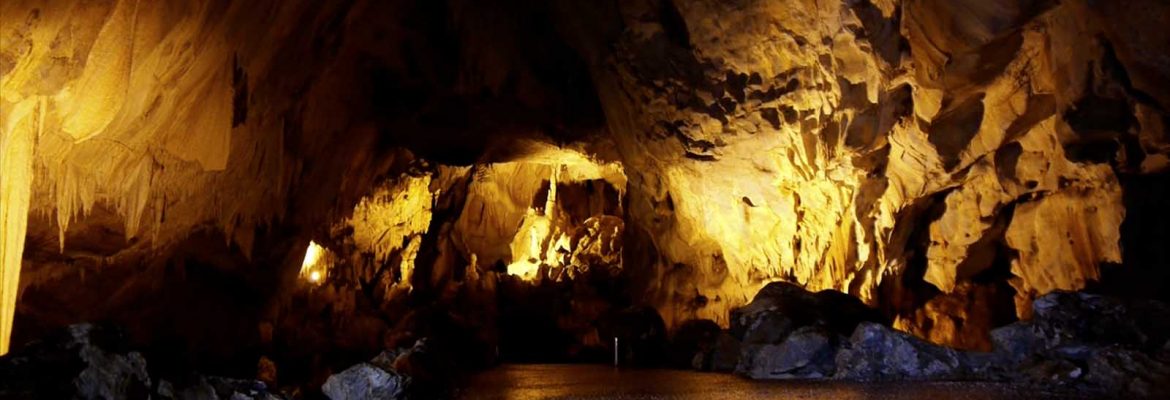Cave of Dragon, Kastoria, Greece
lakeside road and shortly before reaching the Monastery of Panagia Mavriotissa. Its entrance is approximately 20 meters far from the lakefront and 14 meters far from the road. The inside of the cave is divided in large parts of land and water, both adorned with impressive decoration of stalactites. There are 7 underground lakes, 10 rooms and 5 corridor–tunnels in the cave. The largest room of the cave, which has dimensions of 45 meters by 17 meters, has a central part which extends above its lateral parts which both end up in lakes. The largest lake in the cave, which is also the deepest one, is on the west. The temperature inside the cave remains stable throughout the year ranging between 16-18oC, while the humidity reaches 90%.
Various paleontological remains have been found inside the cave of the Dragon, the majority of which, though, are cave bear bones (Ursus Speleaus). This species lived in Europe during the Pleistocene epoch and became extinct about 10,000 years ago. Its name derives from the fact that fossils of this species are mostly found in caves, indicating that this species spent more time in caves than the brown bear which used the caves only for hibernation. It is estimated that the average weight for males was 400–500 kilograms, while females weighed 200–250 kg. They were primarily a herbivorous animal and occasionally a carnivorous one.
It is worth mentioning that all necessary measures regarding the safety of the visitors have been fully taken and all necessary interventions inside the cave were performed in such a way as to ensure the stability of the Cave’s natural environment.
Visit Greece. Epic Greece Adventure Route © Monika Newbound


